22 Racing Series Early Access Review
A few stumbles, but plenty of potential
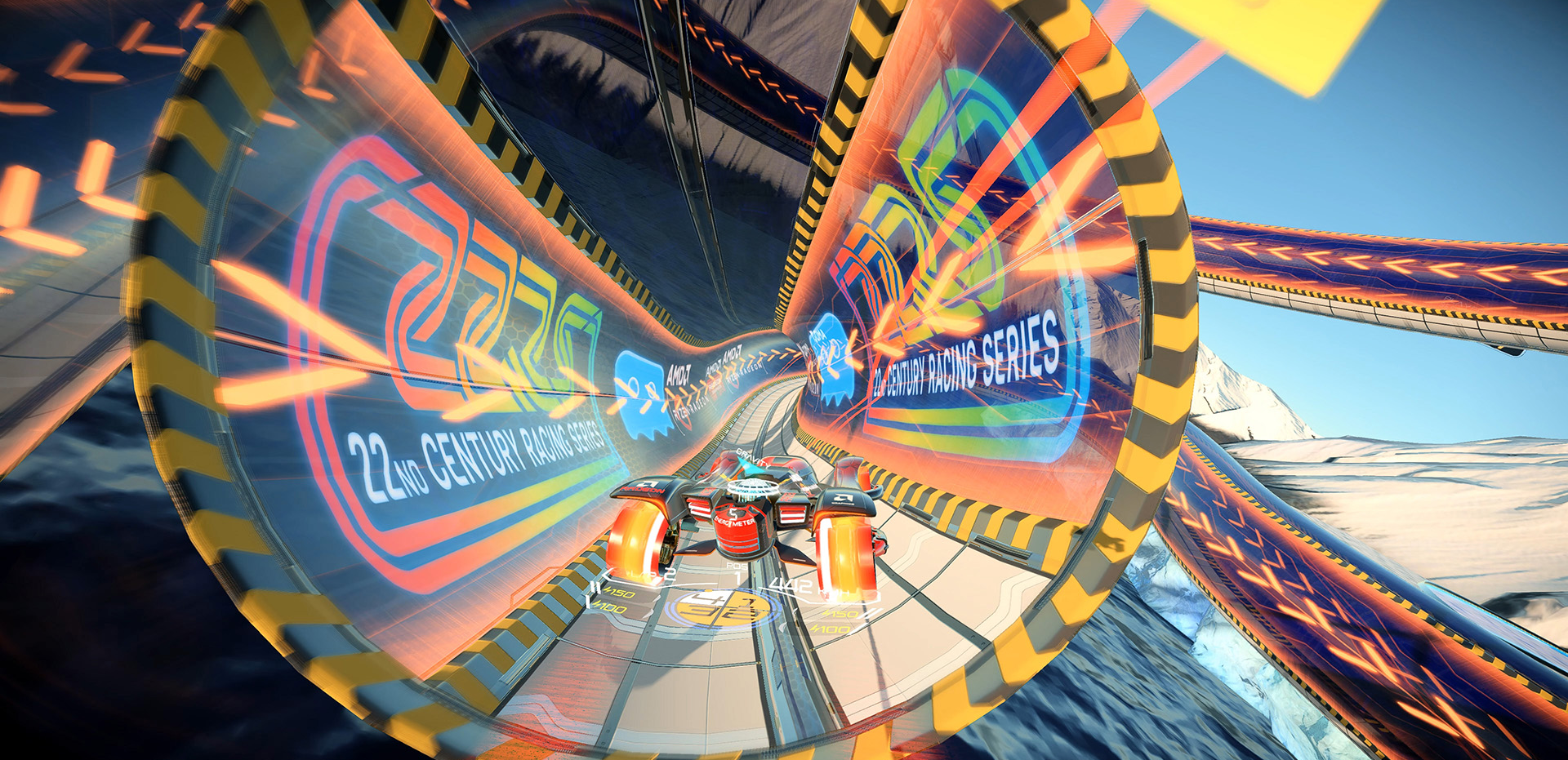
Okay, let's get one thing out of the way: 22 Racing Series has a terrible name. It doesn't exactly roll off the tongue, nor does it provide any hint as to what this game is about. Is it a simulation racer? Is it a series of 22 races? Is it a combat racing game where the cars are armed with .22 caliber weapons?
At the end of the day, besides some potentially clunky marketing, it doesn't matter. I could probably list a dozen games with terrible names and phenomenal gameplay. The question is: is 22 Racing Series, currently in early access on Steam and Pavillion, one of those games?
22 Racing Series, with the far more appealing abbreviation of 22RS, is developed by the rather brazenly named Greatest of All Time Interactive Entertainment (I promise this won't be a review of GOATi's naming conventions). GOATi is a Melbourne, Australia-based studio that boasts a team of developers who have cut their teeth on well-established franchises such as Far Cry, Test Drive, and Automobilista 2. In addition to 22RS, GOATi develop driver training software, provide contract work for other studios, and have their own blockchain gaming platform, Pavillion - more on that later.
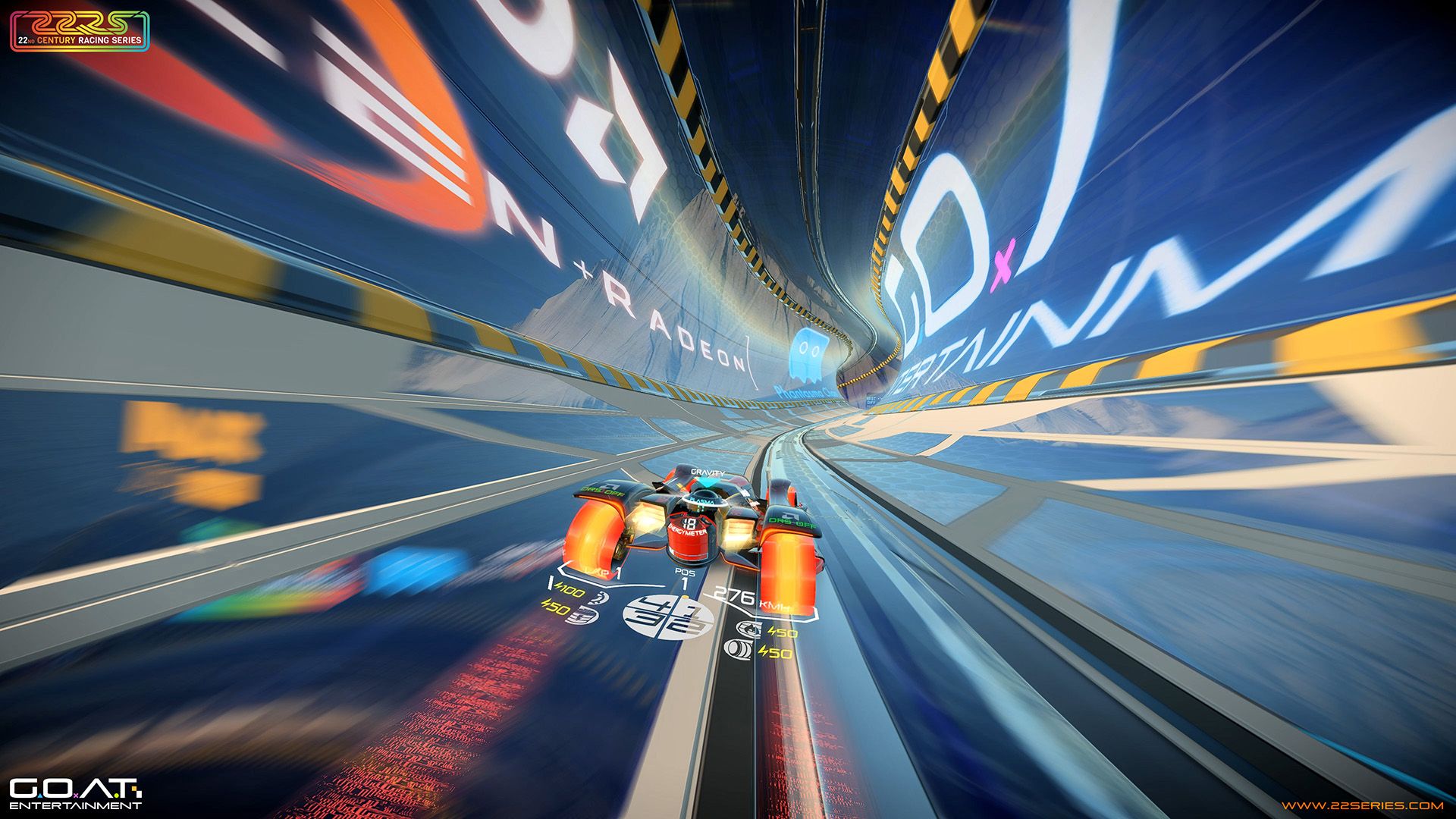
How's your motion sickness?
22 Racing Series wears its inspiration on its sleeve, and even before playing my first track I could see the influence of Wipeout 2097, Rollcage, Trackmania, and Star Wars Episode I: Racer, among others. The track and vehicle designs are dynamic, colourful, and hyper-futuristic; unlike the game's somewhat enigmatic title, the visual design clearly communicates to the player: "this game is fast".
If you've skipped ahead already, then you might be wondering about the genre. 22RS claims to be "Real-Time Strategy Racing", and this genre mash alone was enough to pique my interest.
The core gameplay is, as you'd expect, focused on winning races, but winning isn't as simple as being first to the finish line. Each track is divided up into sectors, and the player that is fastest in each sector claims it. Once a sector has been claimed, it generates energy that can be used to upgrade your car capabilities. Those upgrades are engine power, capacitor, boost, and tires.
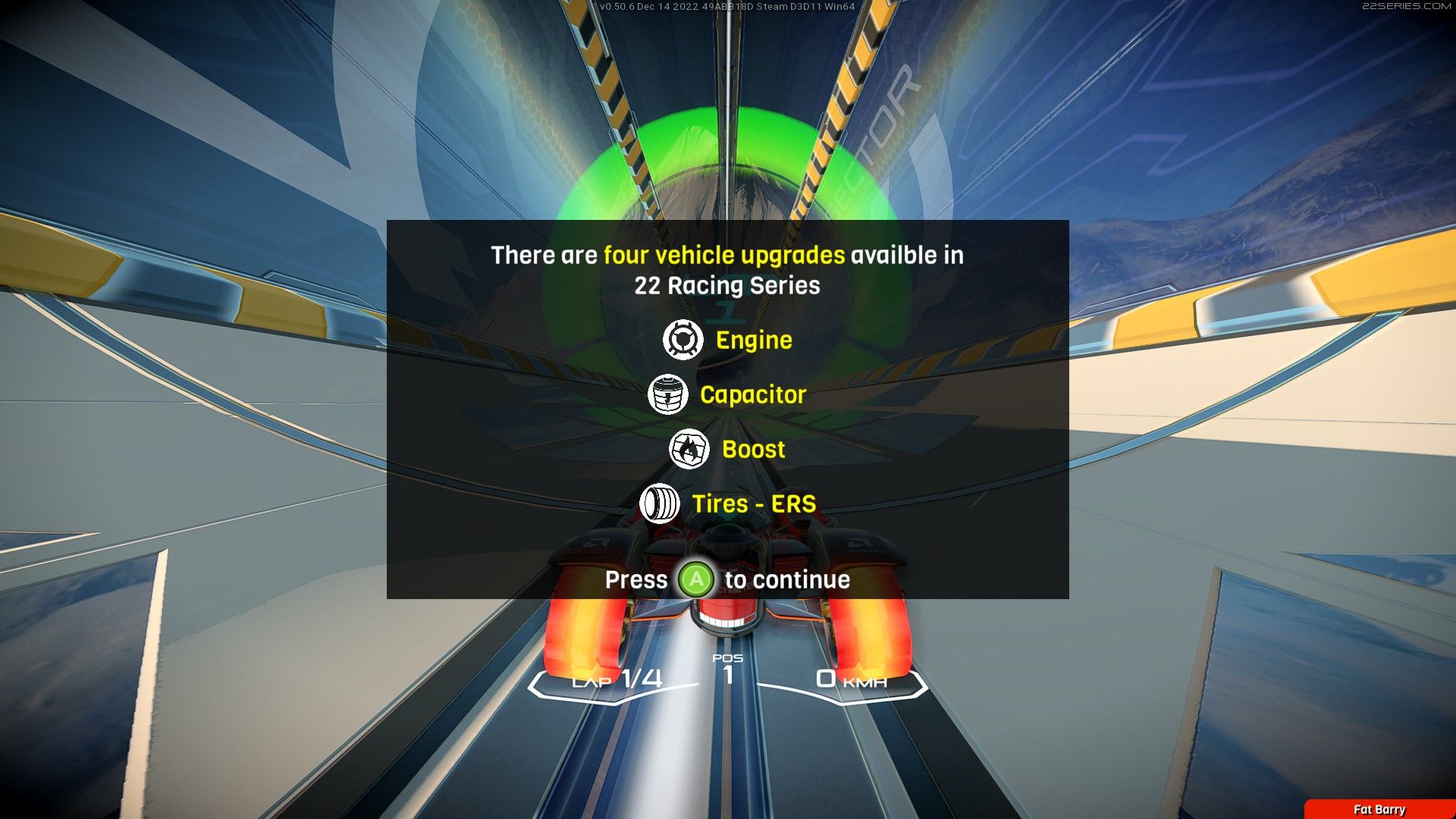
In theory, these upgrades are balanced in such a way that there is no optimal path to the maximum level. For example, upgrading the engine power will provide you with additional base speed, but hitting max level will require more energy than your car can store - so before that, you'll need to upgrade your capacitor. However, maybe you're not holding as many sectors as you'd like, so you might want to upgrade the tires so you can generate energy faster while skidding and braking. Or, perhaps there's a sector coming up that you think you could steal. So, you upgrade your boost to give you that extra burst of speed to claim a sector and generate resources faster.
There are additional factors to consider too...the cars provide a lot of downforce at high speeds, meaning you'll spend a lot of time driving on the walls and ceilings of the mostly tunnel-like tracks. Unfortunately, downforce increases friction and friction lowers top speed. So, you have the option of using "DRS" to reduce downforce and increase top speed, but this comes at the cost of a significant loss of traction and stability.
Controlling sectors gives the controlling player additional abilities, like speed boosts or energy drains of opponents, yet the area of effect is a confusing combination of auras, projectiles, and beams. Once a player (or team) claims all the sectors on a track, a victory countdown begins. In that time, the opposing team still has the opportunity to reclaim any of the sectors, and if they can flip the track and hold the victory timer for longer than their opponent, they might win it.
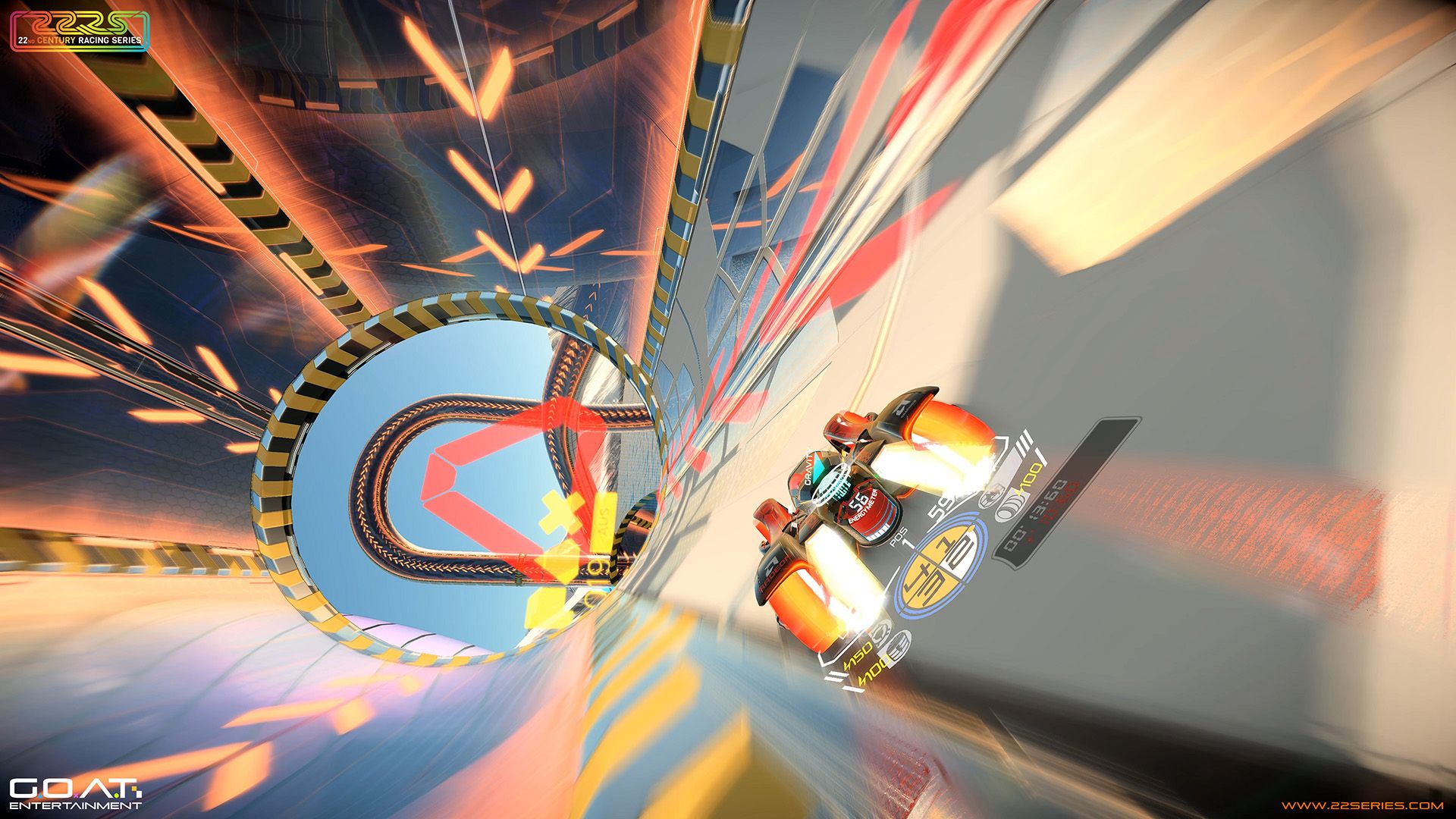
It's a refreshing take on the racing genre, and a unique idea that initially had me intrigued. However, game design is full of ideas that sound great on paper but don't necessarily translate to great gameplay; in this case, 22RS is a mixed bag. All these ideas do sound great on paper as a refreshing twist on the racing genre, where the players need to make strategic choices during a race beyond finding the perfect line or timing a pit stop. It is clear that 22RS is designed with eSports in mind, even without looking at the game's homepage and confirming that that is indeed GOATi's intent.
Unfortunately, these decisions boil down to slight variations on one goal - make your car go as fast as possible as soon as possible. 22 Racing Series is still in early access, and undoubtedly the developer will continue to tweak the values of the upgrades during development, but at the moment, the decisions I made while racing lacked the impact that I thought they would have, and felt more like chore than a feature.
Information overload
Another consequence of having to manage energy, plasma, car upgrades, sector control, plus all the usual racing game information is that the UI is extremely cluttered. Many of these elements are displayed on your vehicle, while others are displayed around the edge of the screen. There is a lot to keep track of, and in the chaos of a high-speed race, many of these details are difficult to see or process.
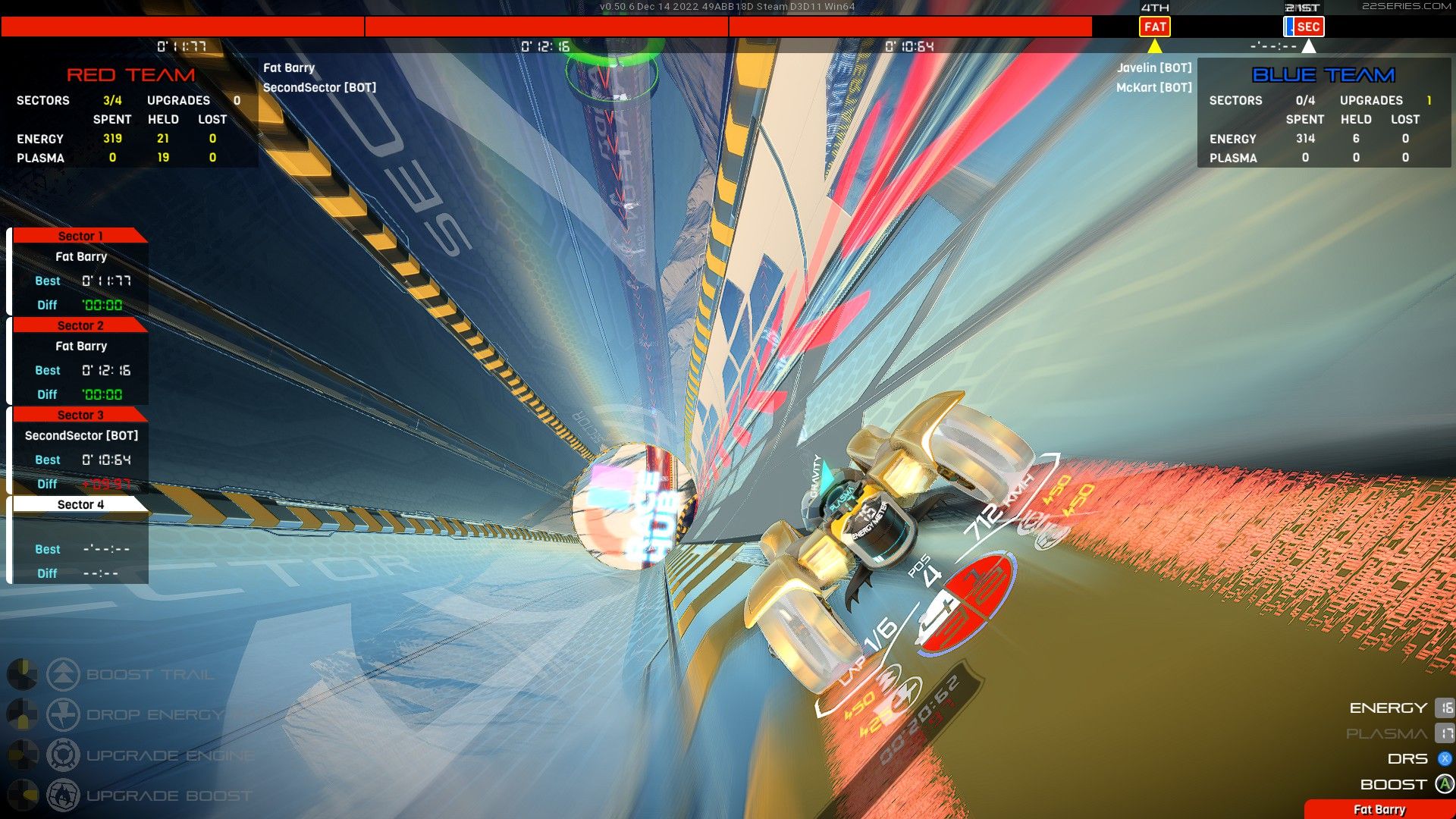
When you are careening through a tunnel, that keeps changing colour, at 600+ km/h, driving a hypercolour car with fluorescent HUD elements and contending with an arrow in the midst of all of it telling you which way is down... well, to say the experience is initially overwhelming would be an understatement.
Between races, menus seem designed for style over substance, with preview pictures of tracks appearing washed-out and indistinct in the haze of all the other brightly glowing UI elements. All in all, the UX design is irritating at best, and incomprehensible at its worst.
More pipes than Mario
The track design is, at this stage, similarly lacking. Almost all of the tracks take place in tunnels that are obviously designed to showcase the fact that your car can drive on the ceiling, but apart from being different combinations of bends and loops, the tracks currently on offer are mostly forgettable. Some tracks offer glimpses of the scenery outside the tunnel, and one even lacks tunnels entirely, while a couple variations on existing tracks have you racing on the outside of the tunnel rather than the inside, but in aggregate, the track design feels distinctly uninspired. The "Daytona" track hints at slightly more interesting possibilities, and GOATi have stated their intent to support modding, but a healthy modding community requires a healthy playerbase, and a solid playerbase comes from a compelling game.
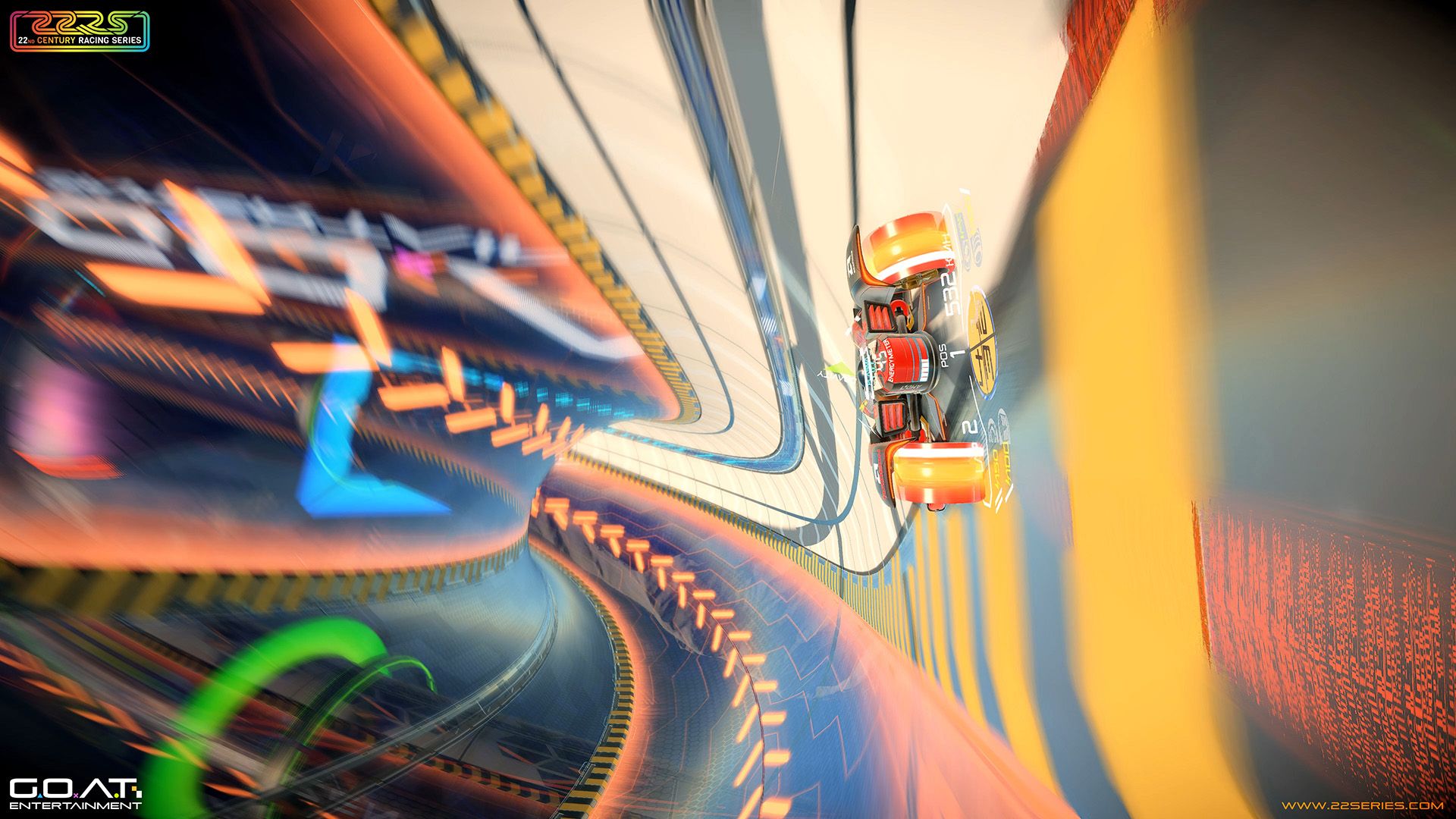
Fortunately, 22RS comes with a track builder that is simple enough to use, so when you inevitably become tired of racing the tunnels that come standard you can always make your own tunnels...
Definite potential
I've highlighted several points so far about 22RS that are lacking, but I think it is important to note that none of these issues are insurmountable. The game is, as I've already mentioned, in early access. UX elements can be improved. Car upgrades can be tweaked. More diverse tracks can be added. The name could even change (the last time I mention it, I swear).
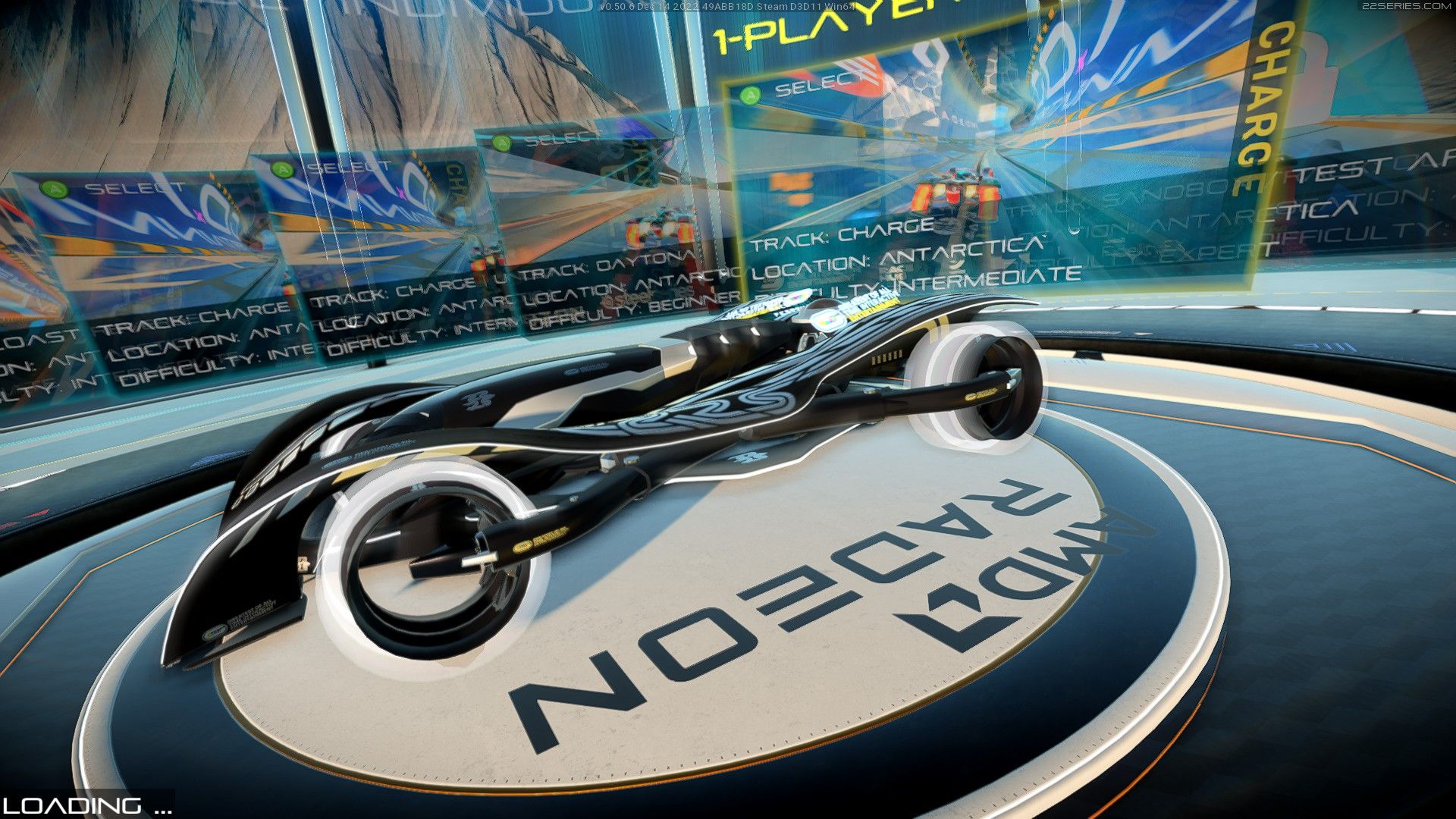
The driving physics take a little getting used to - definitely arcade-y, but with a hint of simulation - however, once you get used to them, the feeling of barely-controlling a big hunk of metal flying through a winding tunnel is a pretty exciting experience. There's also a refreshing nod to the golden age of local multiplayer, with up to four players able to play in split-screen, something far too many racing games lack these days.
That "other" thing...
I want to keep my opinions on 22 Racing Series restricted to the gameplay as much as possible, but no game (or any other form of media) is produced in a vacuum, and I feel like I need to address the developer's involvement in blockchain and NFTs.
I want make one thing absolutely clear - 22 Racing Series is not an NFT game. A response by the developer on the game's Steam forum clarifies this point:
"There aren't NFTs in the game.
There is a review on our store page claiming the game is "based on blockchain technology" but this is misinformation that we can't do anything about now.
To fund development, we launched the game on a different store besdies [sic] Steam first, and that other store implements their version of Steam marketplace using NFT's (and game purchases themselves too). If you purchase any game on that other store, the game license is stored in their blockchain log."
That "other store" is GOATi's Pavillion Hub. While Pavillion uses the more environmentally sustainable Phantasma Chain, there is still the consideration of whether or not you want to support a developer that is supporting the monetisation of the industry with NFTs, a topic that has broad implications for the industry at large.
This is not a criticism of 22 Racing Series: the game exists on its own merits, and has much to admire. However, given the wider discussions around NFTs in the games industry today, it is something that anyone purchasing the game should be conscious of.
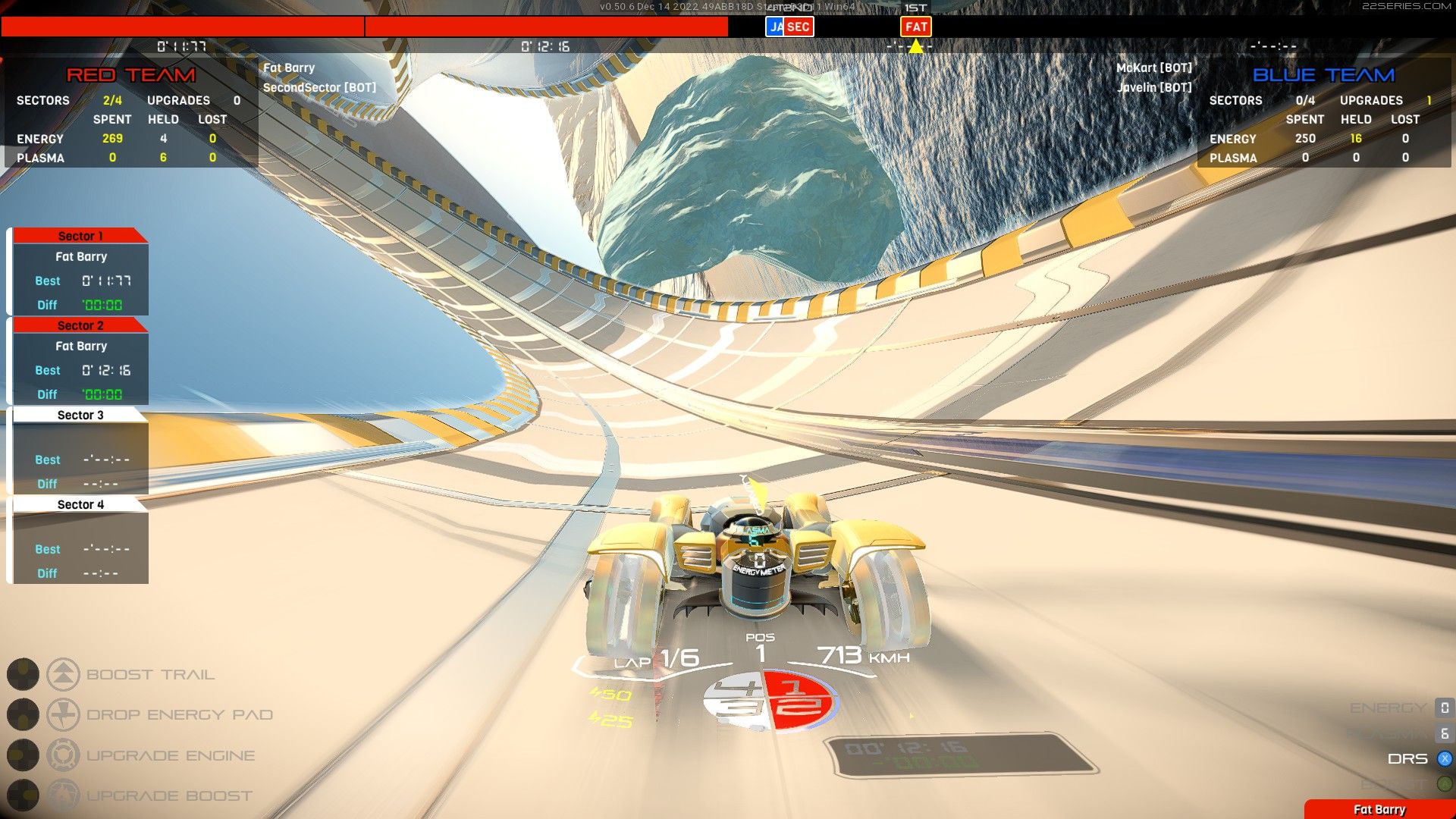
Verdict
What I think often separates average or good games from truly brilliant games is not what the developer has included but what they have excluded. 22RS might be lacking in some track variety or aesthetic diversity, but even with these improvements, there are still too many mechanics crammed into the game. GOATi is well positioned to refresh the racing genre with some of their unique "RTS-Racing" ideas, but if they want to capture an audience in the first place, these elements need to be stripped back and refined. And, in some cases, they might need to make the difficult design decision to drop some elements entirely.
At this stage, 22 Racing Series is a game to keep an eye on, but maybe not one to dive into immediately. Regardless, the budding reemergence of fast-paced arcade racers like this bodes well for the future of the genre, and I hope we see more developers take us back to the days of Rollcage, Wipeout 2097, and Powerslide.